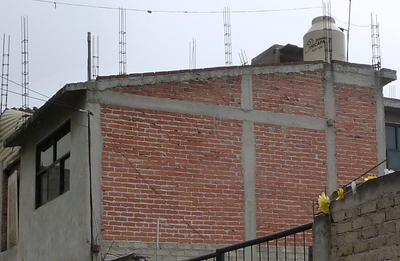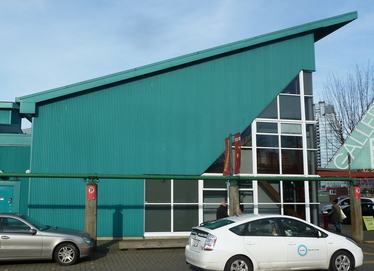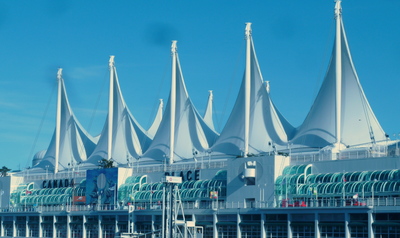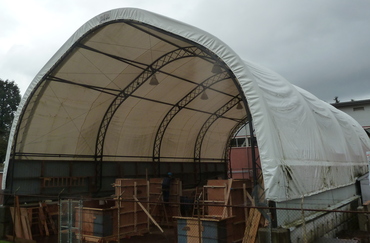- Details
- Written by: admin
- Category: terms
- Hits: 875
The roof slopes in one direction. Lean-to-roof is a special case of monopitch roof - it has a single pitch that rests against a higher wall.

Monopitch roof, Mexico (S. Brzev)

Monopitch roof, Canada (S. Brzev)
- Details
- Written by: admin
- Category: terms
- Hits: 1330
The roof is made of fabric, including tensile membrane, inflatable fabric structures, and other types of fabric sheet roof.
A tensile membrane roof is made of stretched fabric, usually stretched in two directions to form a tensioned surface. Examples of tension membranes include polyester coated with PVC and glass fibre coated with teflon.
An inflatable roof uses fabric chambers pressurized with air to form a self-supporting structure.
Also included is any other type of fabric roof not inflatable or stretched like a tensile membrane, and includes plastic sheet, tarpaulin, canvas sheeting.

Canada Place in Vancouver, Canada is an example of tensile fabric roof structure (S. Brzev)

An example of a fabric roof (S. Brzev)
- Details
- Written by: admin
- Category: terms
- Hits: 803
The roof structure is constructed of masonry.
- Details
- Written by: admin
- Category: terms
- Hits: 737
A building used for social gatherings such as clubs (other than sports clubs), societies, political parties, function centres and conference centres, community halls, town halls.
Refer to Sports and Recreation for sports clubs.
- Details
- Written by: admin
- Category: terms
- Hits: 781
The roof shape is unknown. There is insufficient information available and the roof shape is not observable from the survey.


